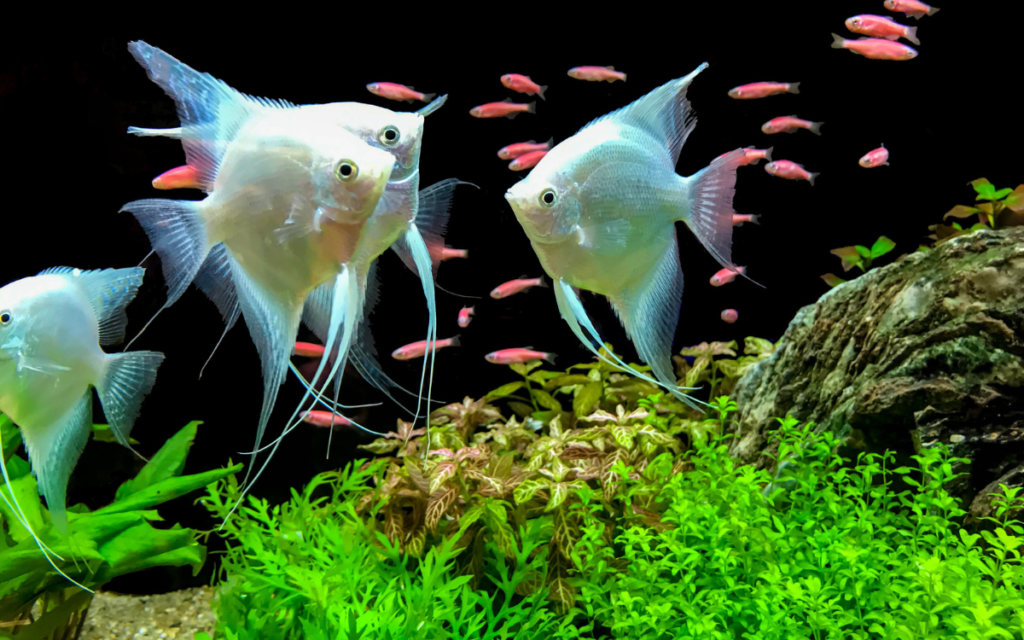Just like humans and other animals, pet fish, especially cold water fish, also exhibit changes in their behavior and eating habits throughout the year. These changes are often closely tied to the natural rhythms of the seasons. Understanding how your fish adapt to these seasonal shifts can help you provide them with the best care possible. In this blog post, Hikari® will explore the fascinating world of seasonal changes in pet fish eating habits.
Spring: The Time of Renewal
As spring arrives, the days become longer, and the temperature starts to rise. This change in the environment has a significant impact on your fish’s behavior and feeding patterns. Here’s what you can expect during this season:
- Increased Activity: Warmer water temperatures lead to increased metabolism in fish. This means your fish become more active and energetic during the spring.
- Appetite Boost: With their metabolism revving up, fish often show a greater appetite in the spring. They may eagerly devour their food, but it is important not to overfeed them.
- Breeding Season: Many fish species start their breeding season in the spring. During this time, they might prioritize courtship and mating behaviors over eating. Some may become territorial and aggressive, so it’s essential to monitor their interactions. Try feeding smaller amount more often if possible.
Summer: Peak Feeding Frenzy
Summer is the season when fish are at their most active, and their eating habits reflect this heightened activity:
- Feeding Frenzy: Fish are voracious eaters during the summer months. The warm water allows for efficient digestion, and they require more energy to fuel their active swimming.
- Varied Diet: In the wild, summer is when a wide variety of insects, algae, and other aquatic life are abundant. Your fish may naturally diversify their diet by foraging for different types of food.
- Watch for Overfeeding: While it’s tempting to feed your fish frequently during the summer, be cautious not to overfeed them. Overfeeding can lead to water quality issues and health problems.
Autumn: Preparing for Winter
As autumn sets in, fish begin to sense the approaching colder months, prompting changes in their eating habits:
- Reduced Appetite: With temperatures gradually dropping, fish’s metabolic rates slow down. This results in a decreased appetite, and they may eat less than they did during the summer.
- Storing Energy: Some fish species, particularly those living in ponds or outdoor water features, start building up fat reserves in preparation for winter. They may consume high-protein foods to store energy.
- Monitor Water Temperature: Be sure to monitor the water temperature as it drops, as this will indicate when it’s time to reduce feeding frequency or potentially stop feeding all together. Overfeeding during cooler temperatures can lead to serious health issues so be observant and cautious during this period.
Winter: A Time of Rest
During the winter months, fish typically enter a state of rest and reduced activity:
- Minimal Feeding: In colder climates, many fish species become almost dormant, and their metabolic activity slows to a minimum. Consequently, they require very little food.
- Be Patient: Winter can be a challenging time for both you and your fish. Try to avoid disturbing them as much as possible. Ensure the water temperature remains stable to prevent freezing.
Understanding the seasonal changes in pet fish eating habits is essential for providing them with proper care and nutrition throughout the year. By recognizing these natural patterns, you can ensure that your fish remain healthy, happy, and well-fed, regardless of the season. If you need any help with feeding choices, reach out to our team at Hikari by contacting us online.

